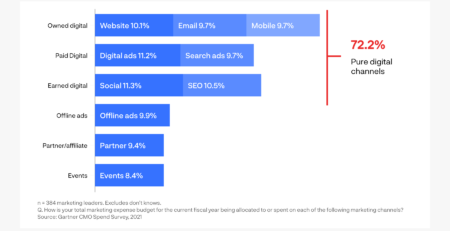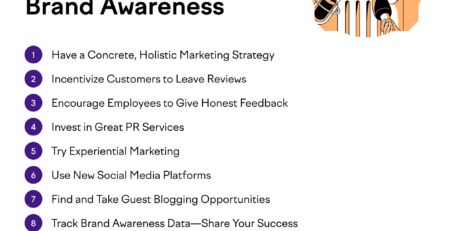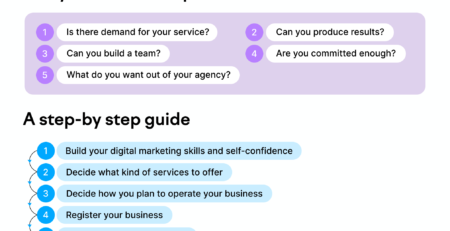What Is Cvr In Digital Marketing?
Have you ever wondered what Cvr in Digital Marketing stands for? Well, get ready for an exciting introduction to this intriguing concept! Cvr, also known as Conversion Rate, is a vital metric that measures the success of marketing campaigns. Let’s dive into the world of Cvr and explore how it impacts the digital marketing landscape.
In the vast realm of digital marketing, Cvr is a superhero that reveals the percentage of website visitors who take a desired action. Think of it as a measuring tape that tracks how effectively a marketing campaign leads to conversions. Whether it’s making a purchase, filling out a form, or subscribing to a newsletter, Cvr shows you the magic behind turning visitors into valuable customers.
So, why is Cvr so important? Well, buckle up and prepare for a wild ride, because a higher conversion rate means a more successful marketing campaign. It’s like hitting the bullseye in a dart game – a sign that you’re effectively connecting with your target audience. By optimizing Cvr, businesses can maximize their return on investment and achieve their desired goals. Are you ready to uncover the secrets of Cvr in digital marketing? Let’s get started!
Curious about CVR in digital marketing? CVR, or Conversion Rate, is a key metric that measures the percentage of website visitors who complete a desired action, such as making a purchase or filling out a form. It helps businesses gauge the effectiveness of their marketing campaigns and optimize their strategies. Understanding CVR is crucial for driving conversions and improving ROI. Dive into the world of digital marketing and discover how CVR can impact your business.
What is Cvr in Digital Marketing?
In the world of digital marketing, understanding key metrics and analytics is crucial for success. One such metric that holds significant importance is Cvr, or Conversion Rate. But what exactly is Cvr in digital marketing? In this article, we will delve into the definition, significance, and impact of Cvr in the realm of digital marketing.
Definition of Cvr
Cvr, or Conversion Rate, refers to the percentage of website visitors who take a specific action or convert into a desired outcome. This action could be making a purchase, signing up for a newsletter, or completing a form. Essentially, Cvr measures the effectiveness of your digital marketing efforts by quantifying the percentage of users who take the desired action and become customers or leads.
To calculate Cvr, you divide the number of conversions by the total number of visitors and multiply the result by 100. For example, if you had 100 conversions out of 1,000 visitors, your conversion rate would be 10% (100 / 1000 * 100).
Tracking and analyzing Cvr is crucial for businesses as it provides insights into the effectiveness of their marketing campaigns, website design, and overall user experience. By optimizing Cvr, companies can enhance their marketing strategies, drive more conversions, and ultimately increase revenue.
The Significance of Cvr in Digital Marketing
Cvr plays a vital role in digital marketing as it allows businesses to assess the success of their marketing efforts. It provides actionable insights into how well a website is performing in terms of converting visitors into customers or leads. By monitoring and improving Cvr, businesses can optimize their marketing campaigns and improve return on investment (ROI).
Moreover, Cvr helps companies identify areas of their website or marketing funnel that may need improvement. By analyzing Cvr at different stages of the customer journey, marketers can pinpoint bottlenecks or areas where conversions drop off, allowing them to make data-driven decisions to enhance the user experience and increase conversions.
Furthermore, Cvr is a valuable metric for benchmarking against industry standards and competitors. By comparing their Cvr to industry averages, businesses can gauge their performance and identify opportunities for improvement. It also helps in setting realistic goals and targets for marketing campaigns.
Factors Affecting Cvr
Various factors can impact Cvr in digital marketing. Understanding these factors is essential for optimizing Cvr and improving overall conversion rates. Here are a few key factors:
Website Design and User Experience
A well-designed website with an intuitive user interface and seamless navigation can significantly impact Cvr. A cluttered or confusing website can lead to high bounce rates and lower conversions. By focusing on user experience and ensuring a user-friendly design, businesses can enhance Cvr.
Relevance of Content and Offerings
Delivering relevant and compelling content that addresses the pain points and needs of your target audience is crucial for driving conversions. Offering valuable incentives, such as discounts or exclusive deals, can also boost Cvr. Ensuring the alignment between your content, offerings, and target audience can have a positive impact on Cvr.
Call-to-Action (CTA)
The placement, design, and messaging of your call-to-action (CTA) buttons can influence Cvr. Clear and compelling CTAs that guide users towards the desired action can help improve conversions. Testing and optimizing CTAs can make a significant difference in Cvr.
Page Load Speed
In today’s fast-paced digital world, users have little patience for slow-loading websites. Slow page load times can lead to high bounce rates and reduced Cvr. Optimizing website speed and performance is crucial for enhancing Cvr.
Trust and Social Proof
Building trust with your target audience is essential for encouraging conversions. Testimonials, reviews, and social proof can play a crucial role in boosting Cvr. Displaying trust symbols, such as security badges or certifications, can also instill confidence in users and improve conversions.
Targeting and Segmentation
Relevance is key when it comes to increasing Cvr. By effectively targeting and segmenting your audience based on their demographics, interests, and behaviors, you can deliver highly personalized and tailored experiences that lead to higher conversions.
Mobile Optimization
With the increasing use of mobile devices, optimizing your website for mobile users is essential. Mobile-friendly designs and seamless experiences on smartphones and tablets can significantly impact Cvr.
Analytics and Testing
Regularly monitoring and analyzing your website’s performance, user behavior, and conversion patterns can provide valuable insights for improving Cvr. A/B testing different elements, such as headlines, visuals, or CTAs, can help identify what resonates best with your audience and maximize conversions.
Benefits of Optimizing Cvr
Optimizing Cvr can result in a range of benefits for businesses engaged in digital marketing. Here are some key advantages:
- Increased Revenue: By improving Cvr, businesses can generate more conversions and ultimately increase their revenue.
- Better ROI: Optimizing Cvr helps businesses get more value out of their marketing investments by ensuring that a higher percentage of visitors turn into customers or leads.
- Competitive Advantage: By outperforming industry averages and competitors in terms of Cvr, businesses can gain a competitive edge in their market.
- Improved User Experience: Optimizing Cvr often goes hand-in-hand with enhancing the user experience, resulting in more satisfied customers and repeat business.
- Data-Driven Decision Making: Analyzing Cvr provides valuable data and insights that can inform marketing strategies and lead to more informed decision-making.
How to Improve Cvr in Digital Marketing?
Improving Cvr in digital marketing requires a strategic and data-driven approach. Here are some tips to help you enhance your conversion rates:
1. Analyze Your Current Cvr
Start by analyzing your current Cvr to understand your baseline performance. Identify areas of improvement and potential bottlenecks in your conversion funnel.
2. Optimize Your Website for Conversion
Ensure that your website is designed with conversion in mind. Make your call-to-action buttons prominent and compelling, simplify your forms, and optimize your landing pages for maximum impact.
3. Create Engaging and Relevant Content
Deliver personalized and high-quality content that resonates with your target audience. Address their pain points and present solutions that encourage conversions.
4. Implement A/B Testing
Test different elements of your website, such as headlines, visuals, CTAs, and forms, to identify what works best for your audience. Use A/B testing to measure the impact of each variation on your Cvr.
5. Enhance User Experience
Ensure that your website provides a seamless and user-friendly experience. Optimize page load times, simplify navigation, and focus on mobile optimization.
6. Utilize Social Proof
Showcase testimonials, reviews, and endorsements to build trust and credibility. Incorporate social proof elements that highlight the positive experiences of your customers.
7. Monitor Analytics and Iteratively Improve
Regularly monitor and analyze your website analytics to track the impact of your optimization efforts. Use the insights gained to make data-driven decisions and continuously improve your Cvr.
Cvr vs. Other Metrics in Digital Marketing
In the realm of digital marketing, there are various metrics that businesses track to measure performance and success. Let’s compare Cvr to some of these metrics:
1. Cvr vs. Click-Through Rate (CTR)
While CTR measures the number of users who click on a specific link or ad, Cvr focuses on the percentage of users who convert or take the desired action. Cvr gives a more accurate indication of whether your marketing efforts are successfully driving conversions, while CTR provides insights into the effectiveness of ad placements or email campaigns in generating clicks.
2. Cvr vs. Bounce Rate
Bounce rate refers to the percentage of visitors who leave your website without interacting with it further. Cvr, on the other hand, measures the percentage of visitors who convert. While a low bounce rate is generally desirable, a high Cvr indicates that your website is effectively turning visitors into customers or leads.
3. Cvr vs. Cost per Acquisition (CPA)
CPA calculates the average cost of acquiring a customer or lead. Cvr, on the other hand, focuses on the percentage of visitors who convert. While CPA provides insights into the financial aspect of acquiring customers or leads, Cvr helps determine the efficiency of your marketing campaigns in turning visitors into conversions.
4. Cvr vs. Return on Investment (ROI)
ROI measures the return generated from an investment, while Cvr focuses on the percentage of visitors who convert. While ROI provides an overall measure of profitability, Cvr provides insights into the success of specific marketing efforts in terms of driving conversions.
5. Cvr vs. Customer Lifetime Value (CLV)
CLV represents the total worth of a customer to a business over their lifetime, while Cvr measures the percentage of visitors who convert. CLV provides insights into the long-term value of customers, whereas Cvr focuses on the immediate impact of marketing efforts on conversions.
Key Takeaways
Cvr, or Conversion Rate, is a crucial metric in digital marketing that measures the percentage of website visitors who convert or take a desired action. By optimizing Cvr, businesses can increase revenue, improve ROI, and gain a competitive advantage. Factors impacting Cvr include website design, user experience, relevance of content, CTAs, page load speed, trust and social proof, targeting and segmentation, and mobile optimization. To improve Cvr, businesses should analyze their current performance, optimize their website for conversions, create engaging content, implement A/B testing, enhance user experience, utilize social proof, and monitor analytics for iterative improvement.
When comparing Cvr to other metrics, it becomes clear that Cvr provides valuable insights into the effectiveness of marketing efforts in driving conversions, while other metrics focus on different aspects of digital marketing performance.
Key Takeaways
- CVR stands for Conversion Rate in digital marketing.
- CVR measures the percentage of website visitors who complete a desired action, such as making a purchase or filling out a form.
- A higher CVR indicates the effectiveness of a digital marketing campaign in driving conversions.
- Optimizing landing pages, improving website usability, and targeting the right audience can help improve CVR.
- Tracking and analyzing CVR is crucial for businesses to measure the success of their digital marketing efforts.
Frequently Asked Questions
Curious about what CVR is in the world of digital marketing? We’ve got you covered! Check out these frequently asked questions to learn more.
1. How does CVR impact digital marketing strategies?
Conversion Rate (CVR) is a crucial metric in digital marketing because it measures the percentage of website visitors who take a desired action, such as making a purchase or submitting a form. CVR directly affects the effectiveness of digital marketing campaigns and strategies by providing insights into their success. A high CVR suggests that the campaign is resonating with the target audience, while a low CVR may indicate room for improvement.
By understanding the CVR, digital marketers can evaluate the effectiveness of their landing pages, calls-to-action, and overall user experience. They can then make data-driven decisions to optimize their campaigns and increase conversions, leading to higher revenue and business growth.
2. How can I improve CVR in my digital marketing efforts?
Boosting CVR requires a combination of strategy and optimization. Here are a few tips to improve CVR in your digital marketing efforts:
First, analyze your target audience and tailor your messaging and visuals to their needs and preferences. This personalized approach can increase engagement and encourage conversions. Second, optimize your website’s user experience by ensuring it is mobile-friendly, easy to navigate, and loads quickly. A seamless user experience can lead to higher CVR.
Third, use persuasive and clear calls-to-action that guide website visitors towards the desired actions. Implement A/B testing to experiment with different CTAs and identify the most effective ones. Finally, regularly track and analyze your CVR using analytics tools to identify areas for improvement and make data-driven changes to your digital marketing strategies.
3. What factors can influence CVR?
Several factors can significantly influence CVR in digital marketing. One of the key factors is the relevance and effectiveness of your landing page. A well-designed and optimized landing page that aligns with user expectations and provides valuable information or offers can enhance CVR. Additionally, the clarity and persuasiveness of your call-to-action play a crucial role.
Another factor is the quality of website traffic. Targeted traffic from sources such as search engine optimization (SEO), pay-per-click (PPC) advertising, or social media marketing can have a positive impact on CVR. Conversely, irrelevant or low-quality traffic can lead to a lower CVR.
4. How can CVR help in measuring the success of digital marketing campaigns?
CVR is a valuable metric for measuring the success of digital marketing campaigns because it directly reflects the effectiveness of the campaigns in driving conversions. By tracking CVR over time, you can determine if your campaigns are resonating with your target audience and driving the desired actions.
Comparing CVRs across different campaigns or variations allows you to identify which specific strategies, messaging, or visuals are most effective in driving conversions. By monitoring CVR alongside other metrics such as click-through rate (CTR) and cost per acquisition (CPA), you can get a comprehensive understanding of campaign performance and make data-driven decisions to optimize future campaigns.
5. Are there any industry benchmarks for CVR in digital marketing?
Yes, industry benchmarks for CVR in digital marketing can provide helpful reference points to assess the performance of your campaigns. These benchmarks vary depending on factors such as industry, business type, and target audience. For example, e-commerce companies generally have higher CVRs than informational websites.
To find industry benchmarks for CVR, you can refer to industry reports, case studies, or research conducted by reputable marketing organizations. However, it’s important to consider that benchmarks provide a general indication and should not be the sole focus. Your unique business goals and target audience should ultimately guide your CVR optimization efforts.
Basic Media Metrics Explained | CPM | CTR | CPC | CPA | CVR | Programmatic Advertising EP 8
Summary
CVR, or Conversion Rate, is a super important thing in digital marketing. It measures how many people take action on your website. You want a high CVR because that means more people are buying or signing up for stuff. There are lots of things you can do to improve your CVR, like making your website easy to use, using clear and persuasive language, and making the buying process simple.
But CVR isn’t the only thing that matters. You also need to think about the quality of your leads. It’s better to have a smaller number of high-quality leads than a big group of people who aren’t really interested in what you’re offering. So, you need to strike a balance between getting lots of traffic to your site and getting the right kind of traffic. Remember, it’s not just about getting people to your site, it’s about getting them to actually take action and become customers.











